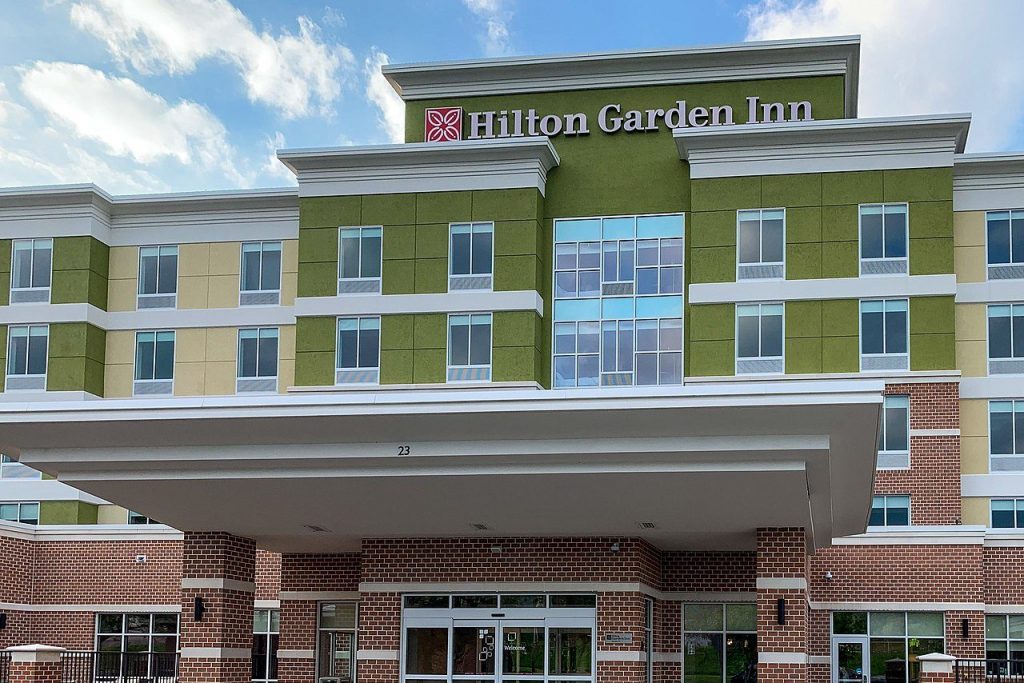Skift Take
Hilton's financials are quickly heading in the right direction, but the company — and the greater hotel industry — need to remain cautious about second and third waves of the coronavirus putting a halt to the positive momentum.
The financial worst of the pandemic looks to be behind Hilton, and now is the time to think about growth, company leaders conveyed to investors Wednesday on a third quarter earnings call.
Hilton’s massive second quarter losses have rebounded. The company reported a third quarter loss of $81 million, but that’s significantly better than the $432 million loss posted in the prior quarter. Through a combination of cost savings and focus on organic growth, Hilton leaders think the company has the right fundamentals to make it to the other side of the coronavirus crisis and even boost market share.
“What does it take to get to cashflow positive? We’re almost there — [we] probably just [need] a little bit better demand and better operating performance and you’re there,” said Kevin Jacobs, chief financial officer at Hilton, during the call.
Jacobs and Hilton CEO Chris Nassetta both attribute the company nearing a financial breakeven point to a combination of cost-cutting measures, the beginnings of a rebound in travel demand, and alternative revenue streams like its Workspaces by Hilton work-from-hotel platform.
The cost-cutting measures — which included pay cuts, furloughs, massive corporate layoffs, and eliminating capital expenditures earlier this year — even have the ability to accelerate Hilton’s recovery timeline to 2019 performance levels.
“You will get to cashflow and [earnings before interest, taxes, depreciations, and amortization] levels of 2019 before you necessarily get back to demand levels of 2019 because you have created a much more efficient cost structure,” Nassetta responded to an investor’s question on recovery timelines. “I think that’s a reasonable assumption, and that is certainly what our models would show.”
While most furloughed employees have been called back and some costs will inevitably return when demand levels permit, Hilton leaders still think the cost-savings plan instated earlier this year will lead to higher long-term yields.
“[On the other side of the crisis], we’re a meaningfully higher margin business because we’ve cut a lot of costs and we’re going to continue to keep those costs out of the business,” Nassetta said.
Room Surge
Hilton is also on track to have a significantly larger footprint on the other side of the pandemic.
Hilton approved 17,400 hotel rooms for development in the third quarter, an 8 percent increase in the development pipeline since last year. A significant portion of that growth stemmed from the major brand downturn growth driver of choice: conversions.
Conversions, where the owner of an existing hotel changes flag affiliation to another brand, are heating up during the pandemic. Bigger brands like Hilton make their case to owners by saying brand affiliation will lead the recovery, as travelers will ultimately crave the familiarity of a branded hotel.
Twenty percent of the deals signed for the quarter were conversions, and Nassetta expects that number to climb.
“If we were in the teens [last year], we’ll be in the low to mid-20s [this year], and I think that number will keep creeping up,” he said. “In the Great Recession, we peaked at close to 40 percent. I don’t think we’ll get that high, even though we now have more brands to play with.”
Hilton expects overall room growth to remain somewhere between 4 to 5 percent in coming years, as more than half of the company’s overall 408,000-room development pipeline is under construction and less impacted by the tight lending environment on projects yet to break ground.
New Demand Drivers
Despite the optimism, Hilton is still quite a ways off from a full demand recovery.
Revenue per available room — the hotel industry’s key performance metric — was still down nearly 60 percent for the quarter. But Hilton leaders see the company continuing to head in a positive recovery direction, even with coronavirus cases surging in different parts of the world.
While Hilton’s Europe and Middle East hotel portfolios saw performance dips in recent weeks amid second waves of the virus, the U.S. is generally maintaining performance levels and Asia Pacific continues to build back occupancy and revenue levels. Occupancy in China hit 70 percent in August, and roughly half of Hilton’s U.S. portfolio reached at least 80 percent occupancy levels over the Labor Day holiday weekend.
Hilton launched alternative revenue streams like Workspaces, a work-from-hotel day use program aimed at workers looking for somewhere to work that isn’t their own home while many offices around the world remain closed.
Competitors like Marriott and Mandarin Oriental offer similar programs, and Hilton is making sure it wins over as many customers as possible.
“We are mindful of where the fish are and intensely focused with our commercial teams on getting more than our fair share, which I’m happy to say we are,” Nassetta said.
But there has been the question surrounding the longevity of all these programs. While the commercial real estate community sees merit in programs like the partnership between co-working provider Industrious and hotel company Proper Hospitality lasting post-pandemic, there is less certainty around the ones overseen exclusively by a hotel company.
As for Workspaces by Hilton, it will all come down to demand. If it sparks enough demand, maintaining some degree of the program post-pandemic could fuel rate growth.
“We’re honing some new skills that we didn’t need to have, and when we get to the other side of this and back to a more normal demand environment, we won’t let those muscles atrophy,” Nassetta said. “We’ll have other tools in our toolkit.”
Have a confidential tip for Skift? Get in touch
Tags: coronavirus, coronavirus recovery, hilton
Photo credit: Hilton attributes its third quarter financial rebound to major cost cuts as well as travel demand beginning to revive. Kenneth C. Zirkel / Wikimedia
